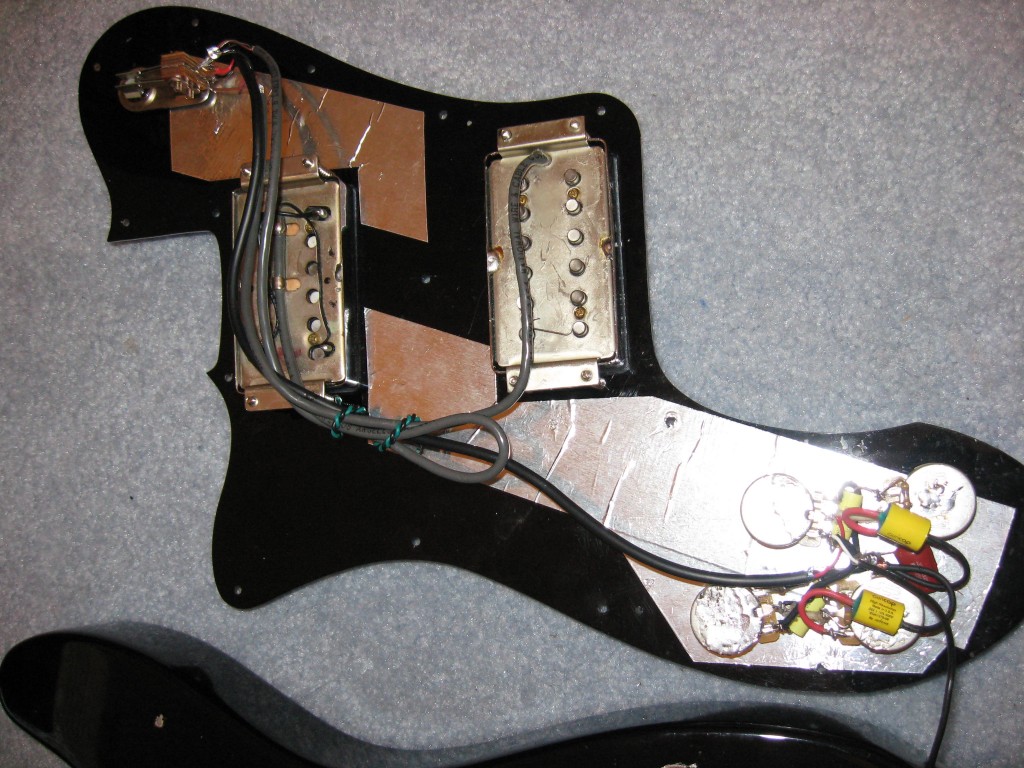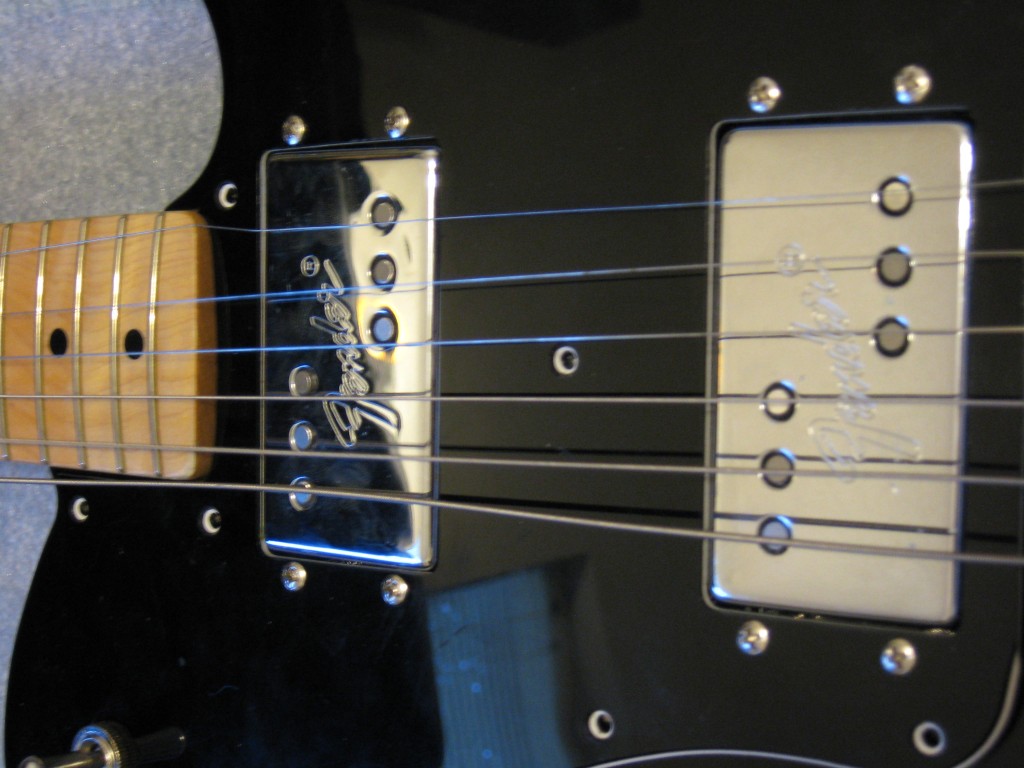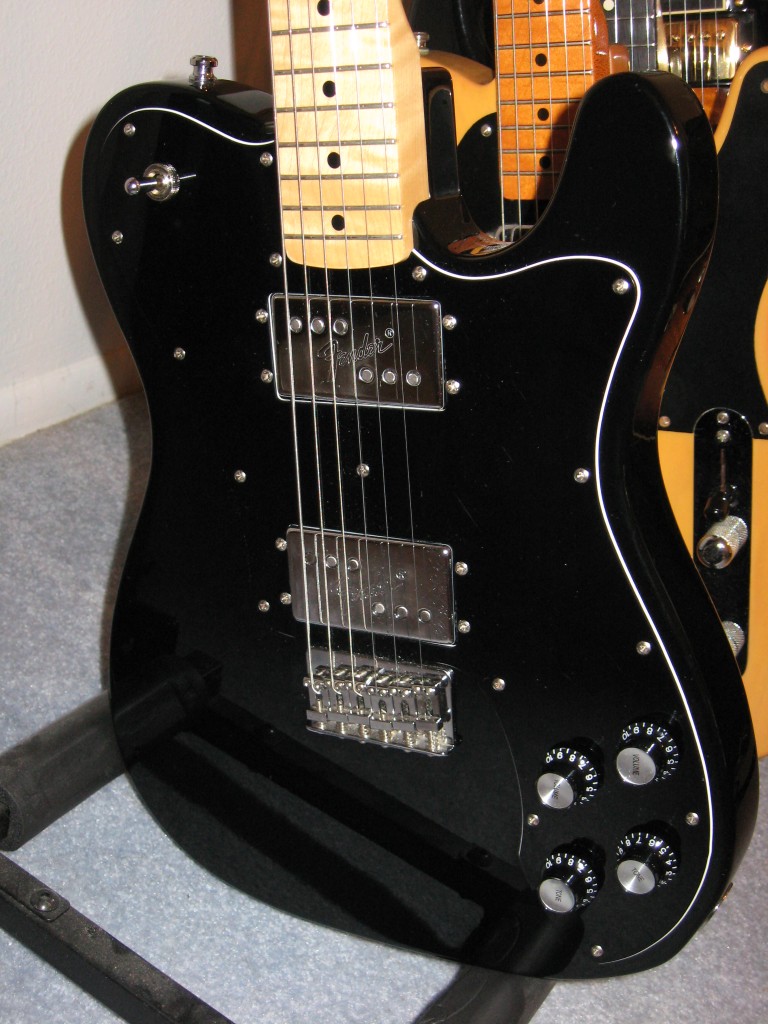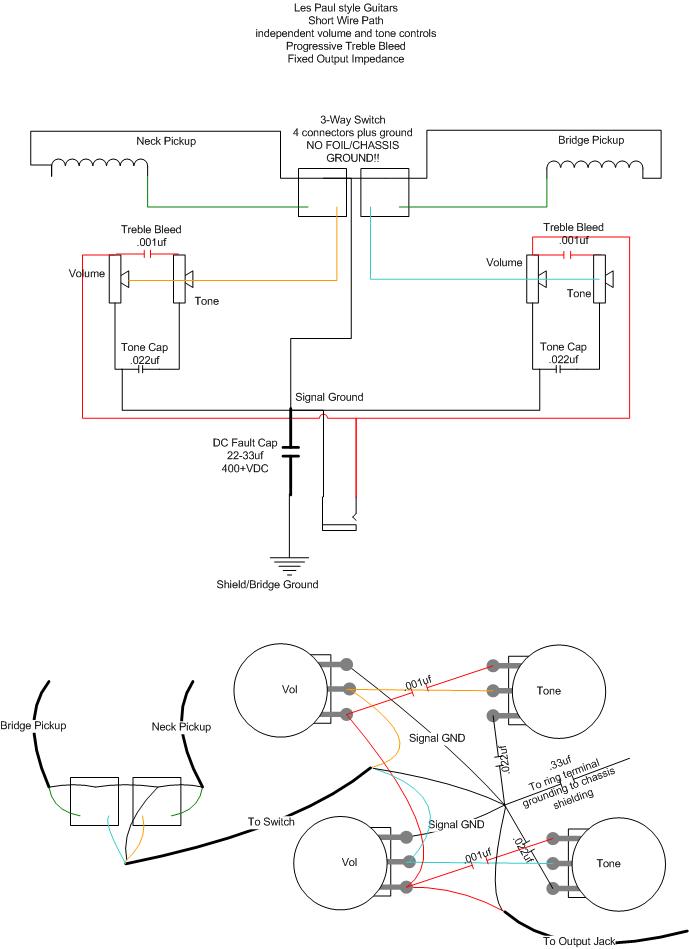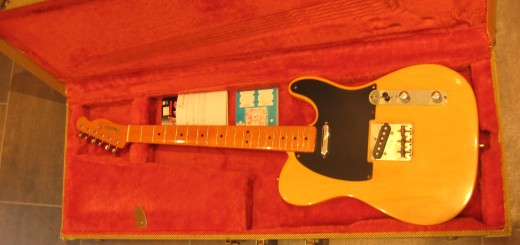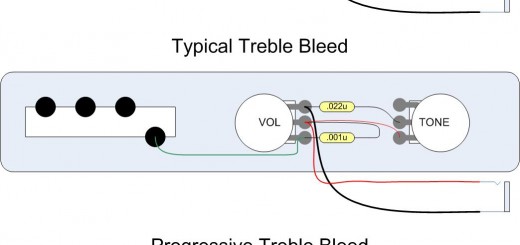There is no shortage of choices when it comes to humbucker-equipped solid-body electric guitars. The Les Paul defined the genre in the late 50s, and today the market is rife with thousands of options. Practically all of them are derivatives of the Gibson PAF design.
Some history: In the early 1970′s Fender finally acknowledged that they were losing some serious market share to these humbuckered axes, so they decided to launch a few radically different Telecaster models with their own special humbucker, the Wide-Range designed by Seth Lover. It was more open and single-coil-sounding than GIbson PAFs thanks to a larger bobbin size and the use of special, threaded Copper-Nickel-Ferrite pole magnets. Due to the hardness and brittleness of magnetic materials it is incredibly hard to machine a magnet to take a thread. To this day the original Fender WRHB is the only mass-produced pickup ever made with threaded pole magnets.
Fast-Forward a few decades and Fender decides they want to make reissues of the ’72 Telecaster lineup. The CuNiFe magnet-equipped WRHBs are too difficult and costly to manufacture, so they decide to go with a more traditional humbucker in a WRHB-sized package. Manufacturing starts first in Japan, where they wind up a crazy hot pickup with original-sized bobbins and ceramic magnets, because hot pickups are the hot ticket in the Asia market. Not long afterwards, Fender USA sets out on designing an economical WRHB with an attitude closer to the original than Japan’s wild and crazy version. They basically end up building a standard mid-range steel-poled humbucker with AlNiCo magnets. They send the design across the border to Mexico where Fender builds their mid-range guitars for the American markets. The only difference between the Japanese and Mexican editions are the humbuckers.
OK, back to the guitar. The ’72 Deluxe is a straight up rock machine. It starts with telecaster body with a belly scoop (like the strat), a standard fixed 6-saddle bridge (not the Tele Ashtray style), a 1-piece maple neck with 3-bolt microtilt mounting, modern 12″ radius and a huge honkin’ CBS-era Strat headstock. It’s loaded with two Fender Wide Range Humbuckers and Gibson-style controls – two volume, two tone, and the selector switch located up on the body’s horn. The stout C-shaped neck is perfect for ripping rock leads and reckless string bends – thicker than the Les Paul’s wimpy neck but not as absurd as the baseball bats they used on the 50′s Broadcaster/Telecasters.
So it’s no secret that Fender Japan builds some very fine guitars. Their precision and detail work is right up there with the Fender Custom Shop. The Mexico factory, on the other hand, doesn’t have as stellar a reputation. Up until around 2008 there were a lot of ’72 Deluxes leaving the Mexico factory with misaligned bridges and pickguards. When I was presented with the opportunity to buy the Created-In-Japan version for practically the same price as the Made-in-Mexico one I jumped at the chance. I wanted the hotter pickups and the superior workmanship cannot be ignored.
Like every electric guitar I’ve ever owned, I didn’t like the stock wiring. 250K pots and .047uf tone caps on a pair of hot ass humbuckers is a recipe for mush. I upgraded to Gibson pots (so the splines would fit those bitchin’ black-and-chrome Gibson tall-skirt knobs), .022uf auricaps and .001uf mallorys, and wired up my progressive treble bleed circuit. Still the neck position was too muffled, so I knew I’d have to make pickup changes. I talked with Telenator about his mods for the MIM WRHB and talked him in to trying with one of my hotter CIJ pickups. After all was said and done I ended up with a Telenator-modified MIM in the neck and a Telenator-modified CIJ in the bridge, both with the fixed-pole Alnico II mod. The clarity, dynamics, evenness of volume and warmth from this combination is absolutely epic. The drive from the neck is full and truly Wide Range – there’s not a PAF in the world that can tackle this spectrum. The bridge, with nearly double the magnet mass of the neck, puts out a STRONG, guttural lead with the power you’d expect in a Flying V while maintaining a response to varying pick attack reminiscent of high-end single coils. Finally the Wide Range Humbucker truly lives up to its name.

